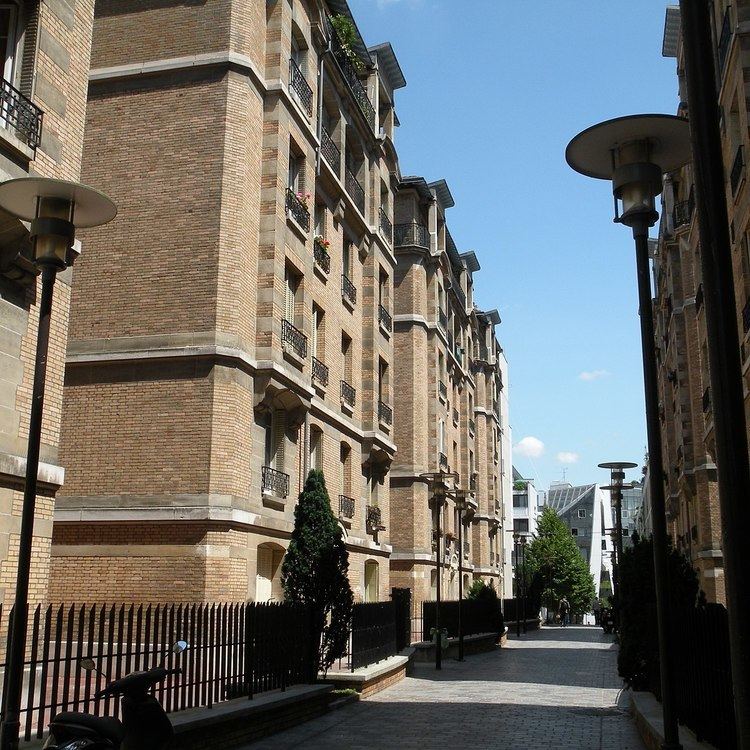 | ||
Public housing in France (French: logement social, also called Habitations à loyer modéré, or HLM) is a central, local or social program designed to provide subsidized assistance for low-income and poor people.
Contents
History
France has a long tradition of social and state intervention in the provision of housing. In 1775, the Royal Saltworks at Arc-et-Senans was built with a part dedicated to house workers. In the 19th century the cités ouvrières (company towns) appeared, inspired by the Phalanstère of Charles Fourier. After World War II the population increased at a rate previously unknown, the rural exodus increased and war damage had reduced the number of houses in many cities. Rental prices dramatically rose so the government passed a rent control law in 1949. That effectively ended the economic benefits of housing investment. Also, construction was strictly regulated, which made building very difficult without political support.
The government launched a huge construction plan, including the creation of new towns ("villes nouvelles") and new suburbs with HLM (Habitation à Loyer Modéré, "low-rent housing"). The state had the money and the legal means to acquire the land and could provide some advantages to the companies that built the huge housing complexes of hundreds of apartments. Quality was also effectively regulated, resulting in decent or even top-quality housing for the 1950s and 1960s. Political forces used the HLM weapon effectively, as the family that was given the opportunity to have an HLM would thank its mayor. Besides, a communist mayor was always happy to have as much HLM as possible, for tenants were poorer and more likely to vote for him. A Gaullist neighbour was as happy to see the tenants leave.
HLM construction was also a major source of political financing, and building companies were sometimes made to pay back the political party of the mayor who launched an HLM program. That resulted in corruption scandals in the Paris region and elsewhere.
In 1998, a law required every town in France to have at least 20% HLM.
Different kinds of social housing
Effect on economy
The social housing programs in France have an obvious positive effect on the consumption of the households that benefit from them. There is no consensus about the influence on either the rents of the private sector or the prices of real estate.
